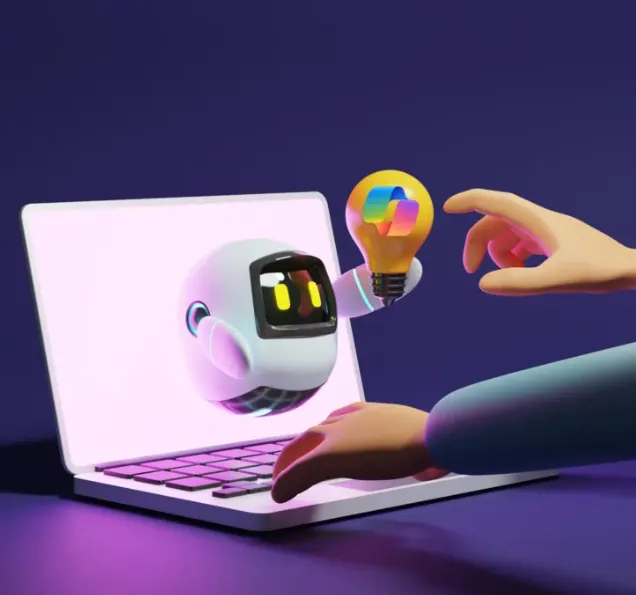Artificial intelligence is no longer just a buzzword—it’s steadily becoming part of daily digital life. One of the strongest examples of this shift is Microsoft Copilot, an AI-driven assistant designed to integrate seamlessly across Microsoft’s ecosystem. What started as Bing AI has now grown into a more powerful tool, supported by OpenAI’s GPT-4 Turbo, offering a smoother, smarter way to interact with technology.
What Exactly Is Microsoft Copilot?
Microsoft Copilot is an intelligent assistant built directly into the company’s software and services. Its role changes depending on where it’s used. In Windows 11, for instance, it can handle quick tasks like adjusting settings or launching focus sessions. Within the Edge browser, it summarizes web pages for you. And in Microsoft 365 applications such as Word, PowerPoint, and Excel, it acts like a partner—helping you draft documents, prepare slides, and even interpret complex data with just a natural language prompt.
Essentially, Copilot is Microsoft’s effort to weave AI into the tools people already rely on, making them not only more efficient but also easier to use.
From Bing AI to Copilot
Originally introduced as Bing Chat in early 2023, the assistant was later renamed Copilot to create consistency across platforms. But the rebrand came with more than just a new name. With GPT-4 Turbo at its core, Copilot delivers faster and more accurate responses, producing results that feel closer to human reasoning.
Where You’ll Find Copilot
Microsoft has been gradually rolling out Copilot in stages:
- February 2023: Launch of Bing Chat, powered by next-generation AI.
- September 2023: Windows Copilot released through a Windows 11 update.
- November 2023: Copilot for Microsoft 365 introduced to enterprise customers, extending its use into workplace collaboration.
The company has also been experimenting with Copilot in specialized tools such as Loop, which enhances team collaboration by pulling content together in one place.
Copilot Inside Microsoft Office
One of Copilot’s most powerful roles is within Microsoft 365 apps:
- Word: It drafts and refines documents based on prompts, even adjusting tone from casual to professional.
- Excel: Users can ask questions in plain language, and Copilot generates formulas, charts, or forecasts without manual setup.
- PowerPoint: Copilot turns outlines into complete slide decks, saving hours of design time.
- Outlook: It manages routine emails, summarizes long threads, and adjusts message style to suit the recipient.
- Teams: Copilot organizes agendas, summarizes meetings, and suggests next steps, reducing the need for manual note-taking.
By tapping into Microsoft Graph, Copilot can also connect emails, chats, documents, and calendars, enabling what Microsoft calls “Business Chat”—a unified hub for project-related queries.
Connection to ChatGPT
The relationship between Copilot and OpenAI’s ChatGPT is at the heart of its capabilities. Microsoft has invested heavily in OpenAI since 2019, supporting the development of landmark models like GPT-3, GPT-4, and tools such as DALL·E. ChatGPT, trained on vast datasets and user interactions, set the foundation for conversational AI that feels intuitive.
When Microsoft announced that Bing would be powered by ChatGPT in early 2023, it was clear the company was moving toward something bigger. Copilot is that evolution: a blend of search, productivity, and generative AI that adapts to both work and everyday tasks.
Choosing a Conversation Style
Copilot isn’t just about what it can do, but how it interacts with you. Users can choose from three distinct styles depending on their preference:
- Precise: Direct, factual, and professional—ideal for research or data-driven answers.
- Balanced: A mix of accuracy and friendliness, offering information in a clear yet approachable tone.
- Creative: More expressive and imaginative, useful when brainstorming ideas or exploring new concepts.
This flexibility makes Copilot adaptable to different scenarios, whether drafting a formal report or looking for inspiration on a personal project.
Looking Ahead
The arrival of Microsoft Copilot marks a turning point in how people engage with technology. By embedding AI into the core of its platforms, Microsoft isn’t just adding features—it’s reshaping workflows. With the power of GPT-4 Turbo and deep integration across applications, Copilot makes tasks simpler, faster, and more intuitive.
As AI adoption accelerates, tools like Copilot demonstrate what the future of productivity could look like: software that doesn’t just respond to commands but collaborates with users to achieve better outcomes. Microsoft’s vision is clear—an ecosystem where AI isn’t an add-on but an essential partner in everyday digital life.







